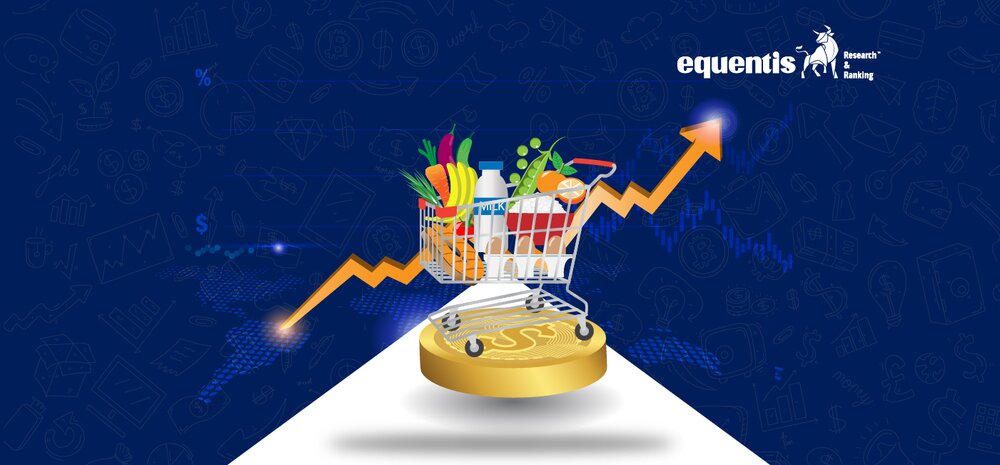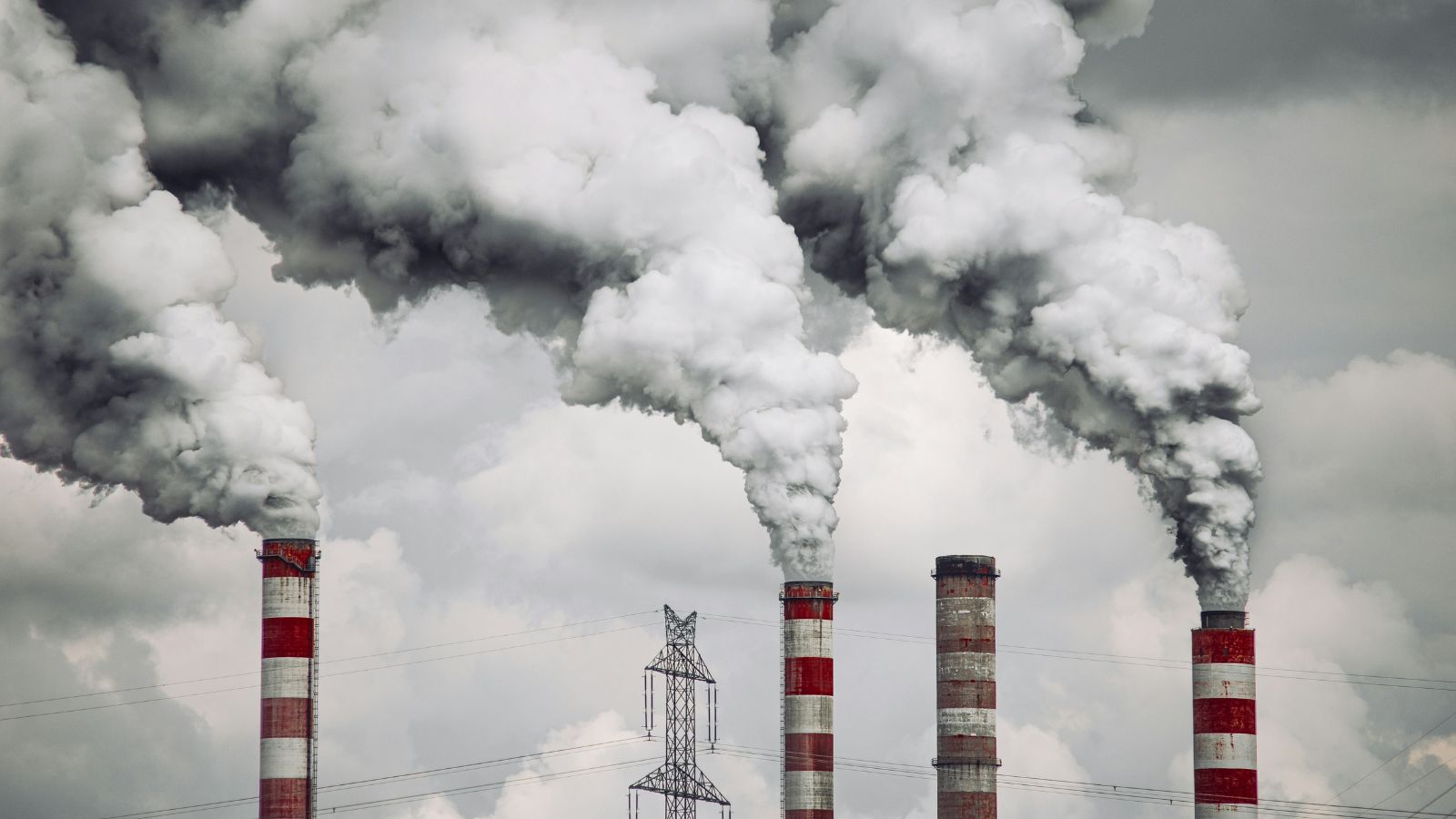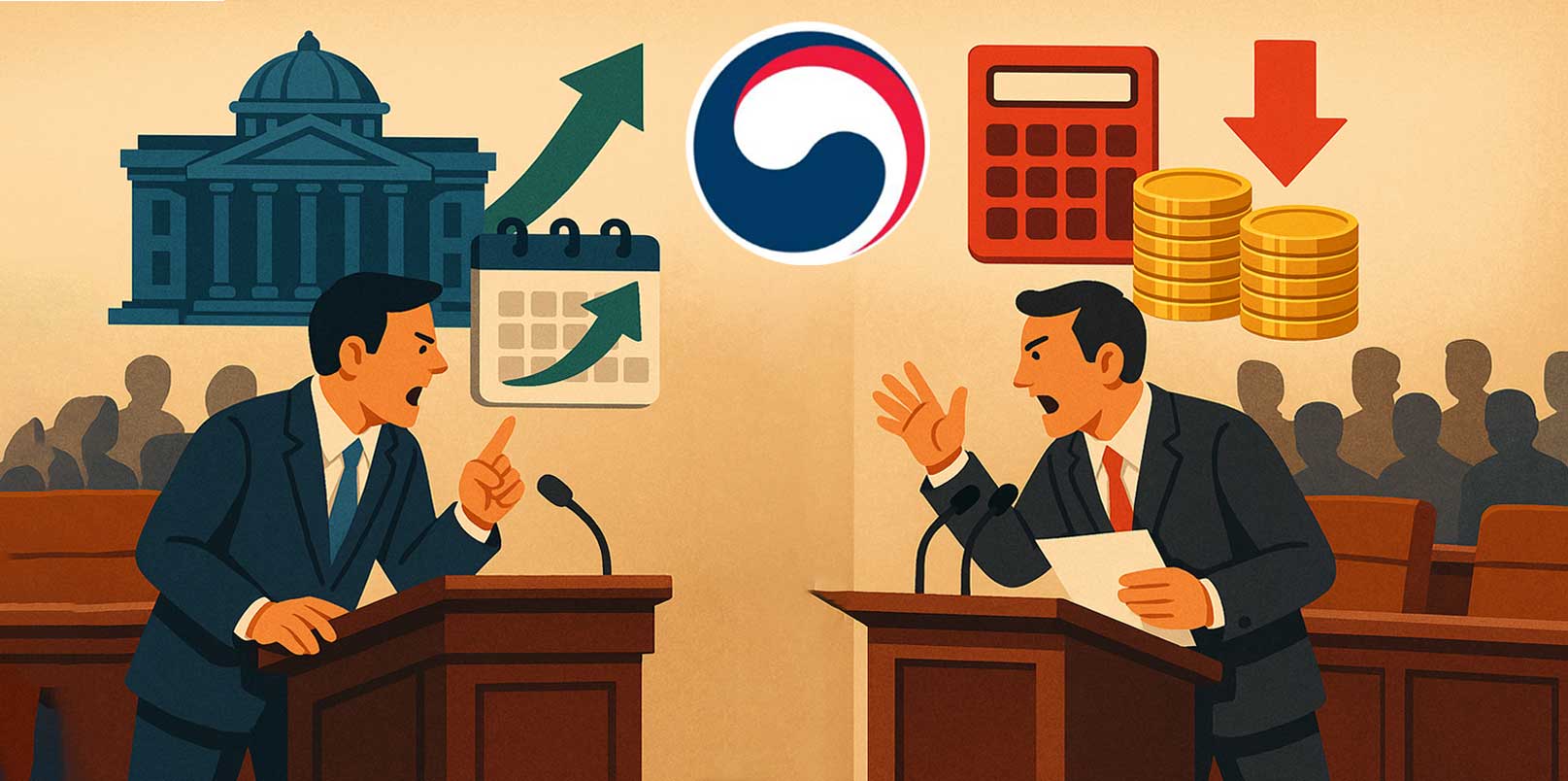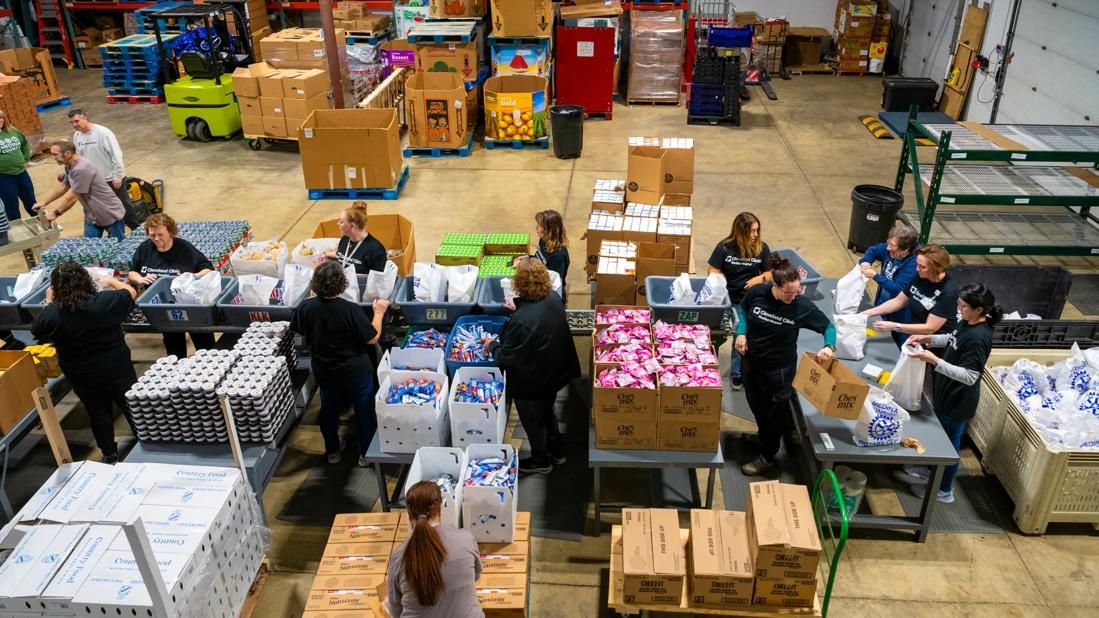Navigating the Economic Crosscurrents: GDP Soars, But Inflationary Pressures Persist – FinancialContent

Economic Performance Report: Q2 2025 Analysis of U.S. Economy and Sustainable Development Goal Implications
Executive Summary
This report analyzes the current state of the U.S. economy, characterized by a robust 3.0% GDP growth in Q2 2025, juxtaposed with persistent inflationary pressures. The analysis is framed within the context of the United Nations Sustainable Development Goals (SDGs), evaluating how current economic trends support or impede progress toward these global targets. The central challenge identified is the tension between achieving SDG 8 (Decent Work and Economic Growth) and mitigating the adverse impacts of inflation on SDG 1 (No Poverty) and SDG 10 (Reduced Inequalities). The divergence in sectoral performance and mixed consumer confidence further complicates the path toward a sustainable and equitable economic future.
Analysis of Macroeconomic Indicators and SDG Alignment
SDG 8 (Decent Work and Economic Growth): A Contradictory Narrative
The U.S. economy demonstrated significant progress toward economic growth targets with a 3.0% annual increase in real GDP in Q2 2025, a strong recovery from a 0.5% decrease in Q1. This growth, driven by consumer spending and a decrease in imports, suggests a resilient economic engine. However, this expansion is not entirely aligned with the principles of sustainable and inclusive growth as outlined in SDG 8. The accompanying inflationary pressures threaten the stability and decency of work by eroding real wages and purchasing power.
SDG 1 (No Poverty) & SDG 10 (Reduced Inequalities): The Inflationary Challenge
Persistent inflation presents a direct threat to the achievement of SDG 1 and SDG 10. Rising costs for essential goods disproportionately affect low-income households, increasing the risk of poverty and widening the inequality gap. Key inflationary indicators highlight this challenge:
- Personal Consumption Expenditures (PCE) Price Index: Rose 2.6% year-over-year in June 2025.
- Consumer Price Index (CPI): Increased 2.7% over the last 12 months as of July 2025.
- Producer Price Index (PPI): Accelerated to a five-month high of 3.3% year-on-year in July, indicating future cost pressures for consumers.
This environment creates an economic divide, where households with fewer assets see their financial security diminish, directly undermining efforts to reduce inequality.
Sectoral Performance: Impacts on Sustainable Development
Sectors Advancing and Hindering SDG Progress
The current economic climate has created a clear divergence in sectoral performance, with significant implications for various SDGs.
- Sectors Demonstrating Resilience:
- Consumer Staples (e.g., Procter & Gamble, Walmart): The stability of this sector supports SDG 12 (Responsible Consumption and Production) by ensuring consistent access to essential goods. However, their pricing power can contribute to inflationary pressures affecting vulnerable consumers.
- Healthcare/Pharmaceuticals (e.g., UnitedHealth Group): This sector’s resilience is crucial for SDG 3 (Good Health and Well-being), providing essential services. Its ability to maintain pricing power ensures continued innovation and service delivery.
- Financials (e.g., JPMorgan Chase): A stable financial sector is foundational for SDG 9 (Industry, Innovation, and Infrastructure) by facilitating investment. However, higher interest rates intended to combat inflation can increase the cost of capital for sustainable infrastructure projects.
- Sectors Facing Headwinds:
- Energy: While profitable, the sector’s gains are tied to rising energy prices, which complicates the transition toward SDG 7 (Affordable and Clean Energy) and poses risks to SDG 13 (Climate Action) if investment is diverted from renewables.
- Consumer Discretionary (e.g., Kohl’s): This sector’s vulnerability highlights the impact on non-essential industries, potentially affecting employment stability under SDG 8 as consumers reduce spending.
- Manufacturing and Transportation: Rising input and fuel costs challenge the sustainability and resilience of supply chains, impacting SDG 9 and SDG 12. These pressures may force companies to cut costs in ways that compromise labor standards or environmental commitments.
Policy Implications and Future Outlook for the 2030 Agenda
Monetary Policy’s Tightrope Walk
The Federal Reserve’s policy decisions are critical. A hawkish monetary stance to control inflation is necessary for long-term economic stability, a prerequisite for all SDGs. However, this approach risks stifling economic growth and employment, creating a direct conflict with SDG 8. The challenge is to curb inflation without triggering a recession that would severely set back progress on SDG 1 and SDG 10. The mixed consumer confidence signals public anxiety over this delicate balance, which could impact consumption patterns relevant to SDG 12.
Long-Term Structural Challenges and Opportunities
Looking ahead, achieving the 2030 Agenda requires navigating several structural shifts:
- Supply Chain Resilience: Re-evaluation of global supply chains, driven by cost pressures, presents an opportunity to build more localized and sustainable systems in line with SDG 9 and SDG 12.
- Green Transition: The costs associated with transitioning to a green economy may contribute to structural inflation but are essential for meeting SDG 7 and SDG 13.
- Technological Innovation: Deflationary pressures from automation and AI could offset inflation, supporting SDG 9 by fostering innovation and potentially creating new forms of decent work under SDG 8.
The path forward requires a policy framework that integrates economic objectives with social and environmental goals, ensuring that short-term stability measures do not compromise long-term sustainable development.
1. Which SDGs are addressed or connected to the issues highlighted in the article?
The article’s discussion of economic growth, inflation, industry performance, and the disparate impacts on different sectors and consumers connects to several Sustainable Development Goals (SDGs). The primary SDGs addressed are:
- SDG 8: Decent Work and Economic Growth: This is the most central SDG, as the entire article revolves around economic performance, measured by GDP growth, and its sustainability in the face of inflation. It also touches upon the labor market and unemployment, which are key components of this goal.
- SDG 9: Industry, Innovation, and Infrastructure: The article provides a detailed analysis of how different industries (e.g., Consumer Staples, Energy, Manufacturing, Transportation) are navigating the economic climate. It discusses industrial resilience, production costs (PPI), and supply chain considerations, which are all core to SDG 9.
- SDG 10: Reduced Inequalities: The article explicitly highlights a growing economic divide in its section “Navigating the Economic Divide: Winners and Losers Emerge.” It explains how inflation and economic conditions disproportionately affect various companies and consumer groups, thereby touching upon the theme of economic inequality.
- SDG 1: No Poverty: While not a direct focus, the article’s emphasis on persistent inflation, its effect on the cost of essential goods, and the erosion of consumer purchasing power is directly relevant to poverty. Rising prices for necessities can push vulnerable households closer to or into poverty.
2. What specific targets under those SDGs can be identified based on the article’s content?
Based on the article’s content, the following specific SDG targets can be identified:
SDG 8: Decent Work and Economic Growth
- Target 8.1: Sustain per capita economic growth. The article’s primary focus is the “impressive annual rate of 3.0%” in real GDP, directly addressing the goal of sustaining economic growth. However, it also questions the quality and sustainability of this growth due to inflationary pressures.
- Target 8.2: Achieve higher levels of economic productivity through diversification and technological upgrading. The analysis of how different sectors are performing—with technology and finance showing resilience while manufacturing faces headwinds—relates to economic productivity and diversification. The need for businesses to prioritize “efficiency, cost control, and supply chain resilience” also aligns with this target.
SDG 9: Industry, Innovation, and Infrastructure
- Target 9.2: Promote inclusive and sustainable industrialization. The article’s in-depth look at the manufacturing sector, which faces “increased production costs from rising raw material costs, labor expenses, and tariffs,” and the transportation sector, which is “highly susceptible to fluctuating fuel costs,” directly relates to the health and sustainability of industrialization.
SDG 10: Reduced Inequalities
- Target 10.1: Progressively achieve and sustain income growth of the bottom 40 per cent of the population at a rate higher than the national average. The article implies a challenge to this target by describing how consumers “cut back on non-essential goods and services” due to higher prices. This suggests that the purchasing power and, by extension, the real income of more vulnerable consumers are being squeezed, creating a divide between “winners and losers.”
SDG 1: No Poverty
- Target 1.2: Reduce at least by half the proportion of people living in poverty in all its dimensions. The persistent inflation discussed, with the CPI increasing “by 2.7% over the last 12 months,” directly threatens this target. Rising costs for essential goods, produced by “Consumer Staples” companies, erode the purchasing power of low-income households, making it harder for them to afford basic necessities and increasing their risk of poverty.
3. Are there any indicators mentioned or implied in the article that can be used to measure progress towards the identified targets?
Yes, the article is rich with economic data that serve as direct or proxy indicators for measuring progress towards the identified targets.
Indicators for SDG 8 (Decent Work and Economic Growth)
- Annual growth rate of real GDP: The article explicitly states, “real GDP increasing at an impressive annual rate of 3.0%.” This is a direct measure for SDG Target 8.1.
- Inflation Rate Indicators: The article provides multiple inflation metrics that measure economic stability, a key component of sustainable growth. These include:
- Personal Consumption Expenditures (PCE) price index: Mentioned as having “increased by 2.1% in Q2 2025” and rising “by 2.6% in June 2025” on a year-over-year basis.
- Consumer Price Index (CPI): Stated to have “increased by 2.7% over the last 12 months.”
- Unemployment Indicators: The article implies indicators related to employment by mentioning “downward revisions to job growth and an uptick in unemployment claims,” which are used to measure progress towards the “decent work” aspect of SDG 8.
Indicators for SDG 9 (Industry, Innovation, and Infrastructure)
- Producer Price Index (PPI): The article highlights the PPI for final demand, which “saw a significant 0.9% month-over-month increase in July 2025.” This indicator measures inflation from the perspective of producers and is a key gauge of the cost pressures on the manufacturing and industrial sectors.
Indicators for SDG 10 (Reduced Inequalities)
- Consumer Confidence/Sentiment Indices: These act as proxy indicators for the economic well-being and security of the population. The article cites the “University of Michigan consumer sentiment index” dropping to 58.6 and the “Conference Board Consumer Confidence Index®” improving to 97.2. The divergence and overall weakness in sentiment, “primarily due to increasing inflation concerns,” suggest that many consumers feel their economic situation is worsening, which is relevant to inequality.
4. Create a table with three columns titled ‘SDGs, Targets and Indicators” to present the findings from analyzing the article.
| SDGs | Targets | Indicators |
|---|---|---|
| SDG 8: Decent Work and Economic Growth | 8.1: Sustain per capita economic growth. |
|
| SDG 9: Industry, Innovation, and Infrastructure | 9.2: Promote inclusive and sustainable industrialization. |
|
| SDG 10: Reduced Inequalities | 10.1: Sustain income growth of the bottom 40 per cent. |
|
| SDG 1: No Poverty | 1.2: Reduce the proportion of people living in poverty. |
|
Source: markets.financialcontent.com

What is Your Reaction?
 Like
0
Like
0
 Dislike
0
Dislike
0
 Love
0
Love
0
 Funny
0
Funny
0
 Angry
0
Angry
0
 Sad
0
Sad
0
 Wow
0
Wow
0















































































